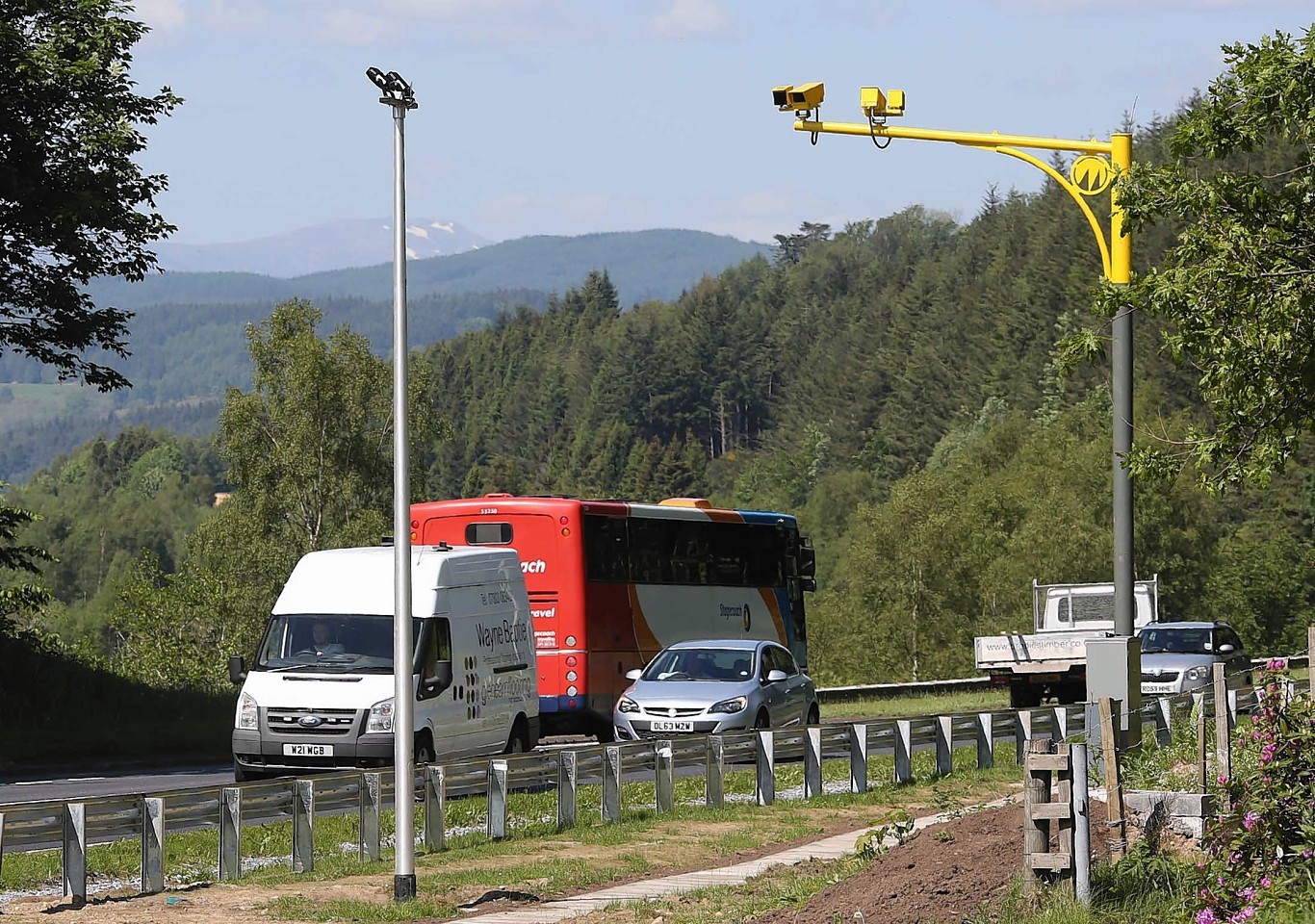The installation of average speed cameras is already encouraging drivers to slow down on the A9 Perth-Inverness road.
Transport Scotland said previous figures showed one in three drivers exceeded the speed limit between Perth and Pitlochry, but this has fallen to one in 10.
Measures to reduce driver frustration are also moving forward, with the Scottish Parliament having approved legislation to increase the speed limit for HGVs from 40mph to 50mph on single carriageway sections of the road when cameras become operational in October.
Speaking ahead of today’s meeting with the Federation of Small Businesses in Inverness, Transport Minister Keith Brown said the facts backed the views of the A9 Safety Group that average speed cameras saved lives.
He said before and after studies of other average speed camera sites across the UK showed a 61% fall in fatal and serious traffic accidents.
“Average speed cameras encourage drivers to improve their behaviour and we are already seeing this on the A9,” Mr Brown said.
“The group is also taking forward measures to improve driver awareness of speed limits and to encourage safe overtaking on the route. Surveys have taken place in respect of driver’s attitudes and experience of the route and further initiatives are being considered.
“When the camera system is switched on, the HGV 50 mph speed limit will also come into force with the backing of the Scottish Parliament.
“The pilot will introduce a level playing field for businesses which we expect will also benefit from less disruption caused by fatal and serious accidents.”
Mr Brown said carriageway restriction put in place following accidents last year totalled 540 hours.
“That’s the equivalent of over 22 days of restrictions on the A9 last year,” he said.
“The cameras will make connections safer and more reliable and will reduce the cost to the economy of serious accidents.”
Superintendent Iain Murray, of Police Scotland, welcomed the reduction in speeding drivers.
“This is an early indication that drivers are already moderating their behaviour. This can only improve safety on the route and I would encourage all drivers to follow this example,” he said.
However, A9 campaigner Mike Burns accused Transport Scotland of “living in Narnia”.
He said regular commuters were reporting journey times between Perth and Pitlochry had increased by 40 minutes, with the average speed down to 32mph, meaning trips to Inverness now take nearly 3.5hrs.
“Drivers are now fearing for their lives with increased dangerous driving as drivers are even more frustrated on an even slower road, which at no point was breaching an average speed limit prior to any camera trials,” Mr Burns said.
“Visitors are reporting to the campaign they are now avoiding Highland holidays due to the chaos. Both Keith Brown and Transport Scotland are living in Narnia as they are so far in the closest on this issue, they have become a laughing stock in the Highlands.”
